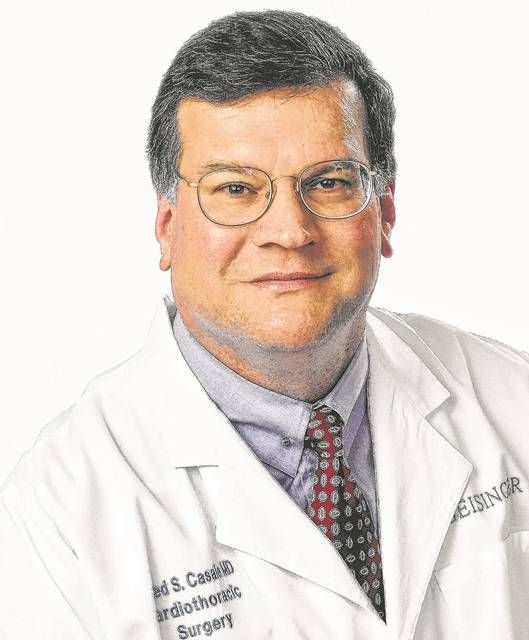Click here to subscribe today or Login.
Happy New Year, everyone.
Over the weekend I heard some very exciting news from my colleague, Dr. Kishore Harjai.
He’s a cardiologist in our Geisinger Heart Institute who specializes in using catheter procedures in the cardiac catheterization laboratory to treat not only the coronary arteries (the heart’s fuel lines) but also the structural elements of the heart such as its valves, walls and various mechanical defects.
One of the most exciting techniques he and a team of other Geisinger cardiologists, surgeons and anesthesiologists, supported by a bevy of skilled nurses, technicians and advanced practitioners, have brought to the Northeast and Central regions of Pennsylvania is TAVR. I’ve written about this Transcatheter Aortic Valve Replacement procedure in this column before. You may recall that it’s the procedure Mick Jagger underwent to deal with his tightly narrowed aortic heart valve.
Remember that the aortic valve separates the heart’s high-pressure pumping chamber, the left ventricle, from the body’s blood distribution network of arteries. The valve opens and closes with each heartbeat and prevents blood from rushing backwards into the pumping chamber from whence it was just ejected, thus allowing the heart to refill, reload and prepare for the next squeeze.
When this critical valve becomes affected by a variety of diseases and injuries, it can scar down and harden, restricting its ability to open and freezing it with a narrowed orifice.
In the past, the conventional treatment for aortic valve stenosis, once severe enough to cause symptoms, was a surgical open-heart operation to cut out the old damaged valve and replace it with a substitute. This generally successful and quite well refined procedure requires general anesthesia, a generous chest incision, use of a heart lung machine to take over the heart’s function for a time and a brief period during which the heart is stopped to allow opening the “water main” and replacing the valve.
In the usually less stressful TAVR procedure however, the replacement valve is folded up onto a catheter, passed through the groin arteries, across the narrowed valve and unfurled within the narrowed area, stretching it, pushing the diseased leaflets out of the way and, now opened, functioning just like the original normal valve … all without a major incision.
These procedures have been shown to be at least as good for many patients as the previous conventional open operations and for some, safer.
Nevertheless, most of the teams throughout the country continue to do the TAVR procedures with the patient under full general anesthesia. Although this too has been generally safe and quite perfected, it does introduce its own risks and potential pitfalls.
The stress of general anesthesia in these often quite fragile and tenuous patients can be significant and may complicate their recovery.
Dr. Harjai and his colleagues reasoned that if they could avoid the risks of general anesthesia and instead sedate their TAVR patients deeply as is often the case with other catheterization procedures, endoscopies and many medical tests and operations, their patients might recover quicker.
They found that by analyzing about 500 patients’ courses following TAVR both ways, that there were many benefits to sedation instead of general anesthesia.
Over the weekend he learned that a very prestigious national journal in cardiology has accepted his team’s report of their findings and will publish it in April.
I’m not allowed to “spill the beans” before then but wanted to let you all know that this remarkable work is only one of MANY important contributions to medical knowledge that our regional medical colleagues have made and continue to make. After the paper is published, I’ll give you the details … but for now let’s celebrate the innovative, insightful, skilled and overall excellent care our medical community is capable of. We are indeed fortunate to live here.
Congratulations, team!








